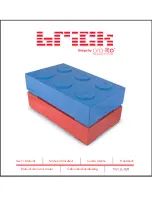
Chapter 6: Replication
Replication
Quantum DXi6900 User’s Guide
132
Directory/File or Cartridge Based Replication
Like replication, Directory/File or Cartridge Based Replication sends data from a NAS share or VTL partition
to another system where it can be accessed. However, Directory/File or Cartridge Based Replication differs
in a number of important ways:
l
Both replication and Directory/File or Cartridge Based Replication must be enabled for the share or
partition.
l
A unique Sync ID is used to associate the replicated share or partition on the source system with the
share or partition that will receive the replicated data on the target system.
l
You do not need to schedule or manually perform Directory/File or Cartridge Based Replication through
the remote management console. Instead, replication is triggered when a file is closed or a period of time
after it is modified (NAS shares), or when a tape cartridge is unmounted (VTL partitions).
Note:
For CIFS/SMB shares, a file is replicated immediately after it is closed. For NFS shares, a file
is replicated after it has been idle (not accessed) for several minutes.
Note:
To optimize the replication process, deduplicated data is continuously sent in the background
from the source system to the target system. Any remaining data is sent (along with metadata) at the
time a file is closed or a tape cartridge is unmounted.
l
After files or cartridges are replicated using Directory/File or Cartridge Based Replication, they are
automatically recovered on the target system and are immediately available for use. There is no need to
first recover the share or partition to access its data.
l
Deletions are automatically propagated from the source system to the target system in order to free up
space on the target. In addition, you can manually initiate a synchronization from the source system at
any time. Synchronizing ensures that the contents of the source share or partition are exactly the same as
the target share or partition.
Caution:
Cartridge barcodes for all source systems that are replicating to the same target must be
unique.
Note:
If you delete a share configured for Directory/File Based Replication on the source DXi, the
share is
not
automatically deleted on the target DXi. If you do not want to retain the share on the target
DXi, you can manually delete it.
OST Optimized Duplication
The DXi6900 can duplicate the data on an LSU (logical storage unit) to another location using the OST
optimized duplication (OST replication) feature supported by Veritas NetBackup and Backup Exec. If you
are using Veritas NetBackup 7.1 or higher, you can configure an LSU for Automatic Image Replication.
For information about configuring and using OST optimized duplication and Automatic Image Replication,
see
Replicating OST Data on page 247
Multiple Target Replication
The DXi6900 can send replicated data to multiple target systems. First, configure up to two replication
















































